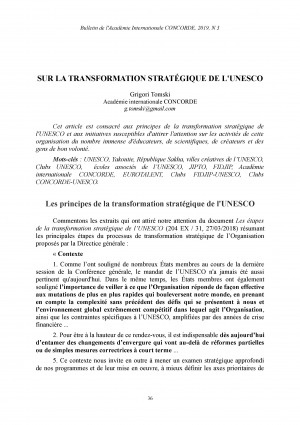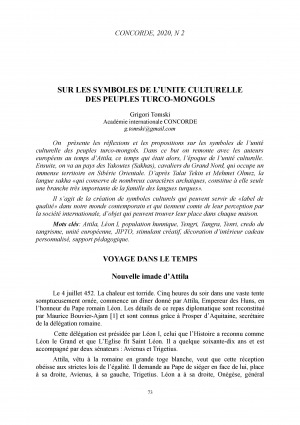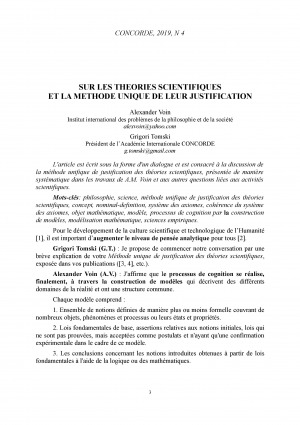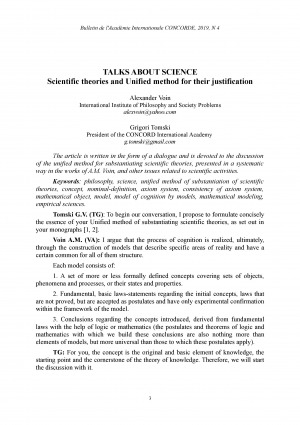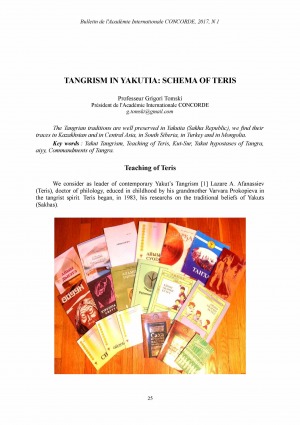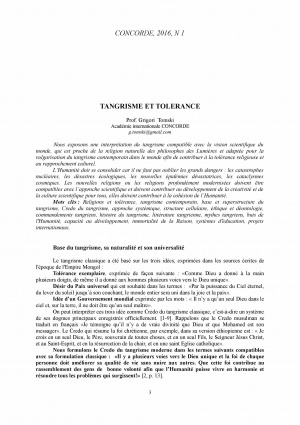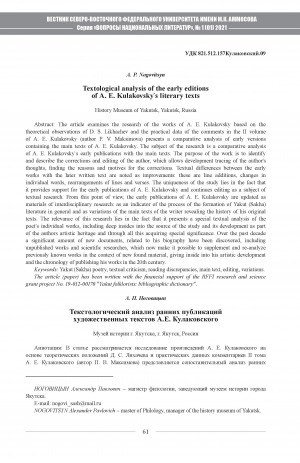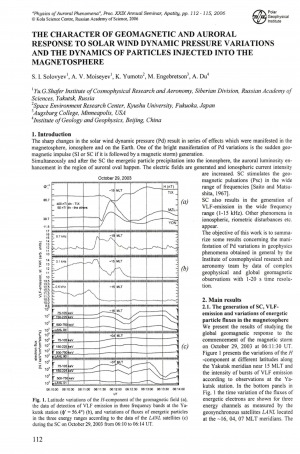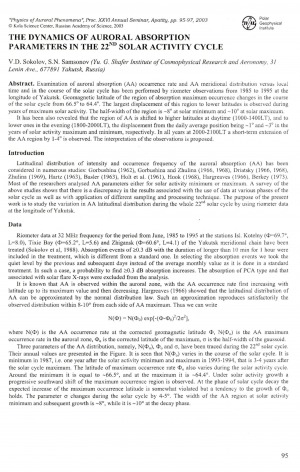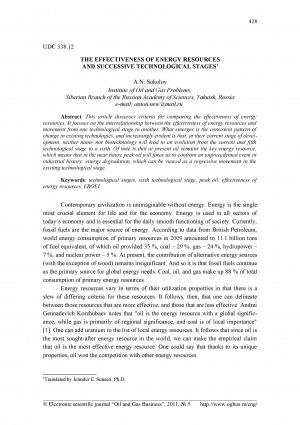Количество страниц: 36 с.
- Томский Григорий Васильевич > Международная деятельность,
- Общий отдел > Общие вопросы науки и культуры,
- Общественные науки. Образование > Право. Юридические науки > Международное право,
- НАУКА ЯКУТИИ > ОБЩИЙ ОТДЕЛ > Общие вопросы науки и культуры,
- НАУКА ЯКУТИИ > ОБЩЕСТВЕННЫЕ НАУКИ > Право. Юридические науки.
Tomski, G. V. Sur la transformation stratégique de l'UNESCO / Grigori Tomski // Bulletin de l’Académie Internationale CONCORDE. - 2019. – N 3. – С. 36-70.
Количество страниц: 26 с.
Tomski, G. V. Sur les symboles de l’unite culturelle des peuples turco-mongols / Grigori Tomski ; Académie internationale CONCORDE // Concorde. – 2021. – N 2. – С. 73-97.
Количество страниц: 12 с.
Voin, A. M. Sur les theories scientifiques et la methode unique de leur justification / Voin Alexander, Tomski Grigori ; Institut international des problèmes de la philosophie et de la société, Académie Internationale CONCORDE // Concorde. – 2019. – N 4. – С. 3-13.
Количество страниц: 14 с.
Voin, A. M. Talks about science Scientific theories and Unified method for their justification / Alexander Voin, Grigori Tomski // Bulletin de l’Académie Internationale CONCORDE. - 2019. – N 4. – С. 3-15.
Количество страниц: 54 с.
Тангрийские традиции хорошо сохранились в Якутии (Республика Саха), мы находим их следы в Казахстане и Средней Азии, в Южной Сибири, в Турции и в Монголии.
Tomski, G. V. Tangrism in Yakutia: schema of Teris / Grigori Tomski // Bulletin de l’Académie Internationale CONCORDE. - 2017. – N 1. – С. 25-78.
Количество страниц: 30 с.
Tomski, G. V. Tangrisme et tolerance / Tomski G. ; Académie Internationale CONCORDE // Concorde. – 2016. – N 1. – С. 3-32.
Количество страниц: 12 с.
- Кулаковский Алексей Елисеевич - Өксөкүлээх Өлөксөй (Ексекюлях Алексей) > Произведения, научные труды,
- Языкознание. Филология. Художественная литература > Литература. Литературоведение > Критика как литературный жанр. Критические статьи. Литературные обзоры,
- Языкознание. Филология. Художественная литература > Литература. Литературоведение > Теория литературы. Изучение литературы. Литературная техника > Художественная литература на отдельных языках > Якутская (саха) литература,
- НАУКА ЯКУТИИ > ЯЗЫКОЗНАНИЕ. ФИЛОЛОГИЯ. ЛИТЕРАТУРОВЕДЕНИЕ. ХУДОЖЕСТВЕННАЯ ЛИТЕРАТУРА > Литература. Литературоведение.
Ноговицын, А. П. Textological analysis of the early editions of A. E. Kulakovsky`s literary texts // Вестник Северо-Восточного федерального университета им. М. К. Аммосова. Серия "Вопросы национальных литератур". - 2021. - N 1 (01). - С. 41-51.
Количество страниц: 4 с.
The character of geomagnetic and auroral response to solar wind dynamic pressure variation and the dynamics of particles injected into the magnetosphere / S. I. Solovyev, A. V. Moiseyev, K. Yumoto, M. Engebretson, A. Du // Physics of auroral phenomena : proceedings of the 29th annual seminar, Apatity, 27 February – 3 March 2006. – 2007. – P. 112-115.
Количество страниц: 3 с.
Sokolov, V. D. The dynamics of auroral absorption parameters in the 22nd solar activity cycle / V. D. Sokolov, S. N. Samsonov // Physics of auroral phenomena : proceedings of the 26th annual seminar, 25 - 28 February 2003. – 2003. – P. 95-97.
Количество страниц: 12 с.
Sokolov, A. N. The effectiveness of energy resources and successive technological stages / A. N. Sokolov // Нефтегазовое дело. - 2011, N 5. - С. 428-438.
